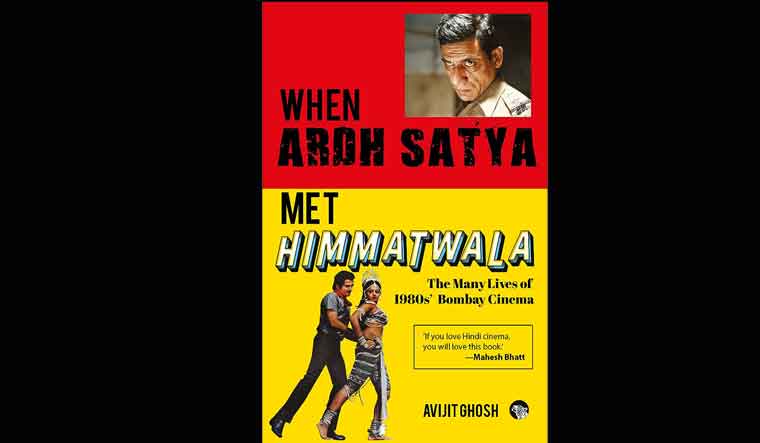In the initial pages of his book When Ardh Satya Met Himmatwala: The Many Lives of 1980s’ Bombay Cinema, Avijit Ghosh writes, “The Eighties was a time of disruption and change in Hindi cinema…The Eighties acted as a hyphen between the past and the future. It was also a decade that tasted the future.” These few lines sum up the essence of journalist Ghosh’s encyclopedia on the '80s era cinema.
The birth and death of new trends, the parallel workings of paradoxical forces made the 80s the decade that acted as a bridge between the classic old-school 70s and the thriving fast-paced 90s. Ghosh, in his book published by Speaking Tiger Books, breaks down the decade of the 80s Hindi cinema and its many influences and flavours that made it a decade of contradictions and change.
Ghosh closely digs into the maturity of parallel and the 'massiness' of masala cinemas, the rise of new stars and the decline of the reigning superstars, the case of launching star sons and promise of new outsiders. He further breaks down the marriage of the northern and the southern cinemas (rather the influence of the latter on the former), the era of cheesy double meaning and suggestive dialogues (Shakti Kapoor in Mawaali says Tumne meri phaadi thhi…pant, Ab main teri phadoonga…pant) and the era of art cinema dominated by the fantastic four – Shabana Azmi, Smita Patil, Naseeruddin Shah and Om Puri.
In doing so, the author exposes several commonalities between the Hindi cinema of the 80s and that of the present times. He writes: “The mainstream Bombay film industry often found ways to laud the government…In Narendra Bedi’s Mahachor (1976), the hero (Rajesh Khanna enlightened the viewer on how the government’s policies will make the country a ‘sone ki chidiya’ again…Those who dared to differ were dealt with sternly” – making the move symbolic of the current wave in the Indian film industry.
Like the 80s witnessed an explosion of newer formats of media and film viewing like television, DVDs, VCRs and plagiarism that posed threats to film collections, the 2020s saw OTT platforms pose a stiff competition to theatres. Like the tussle with the censor board that continues till date (A film like OMG 2 that dealt with sex education in schools was given an A certificate, leading to exclusion of an important set of audience for whom the film was intended – teenagers), the 80s saw the censor board get into a serious chopping mode.
Ghosh writes on how Ram Teri Ganga Maili was cleared without getting censored. “The system was rigged to favour the big cats’ while ‘Manoj Kumar’s Kalyug Ki Ramayan was changed to Kalyug Aur Ramayan to avoid hurting religious sensibilities,” he states.
Ghosh who has extensively written on Hindi cinema has a knack for understanding the world of Hindi films and presents a keen study on this subject, contributing significantly to film literature. Each chapter is a comprehensive study into the cinema of the period and details a unique aspect of the time. When Ardh Satya… is his ode to Hindi cinema and reads into the many lives of Bombay cinema.



